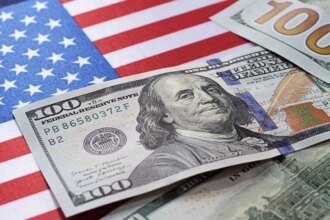You have reached your limit of 5 free articles for this month.
Get Premium without limits for only $479.76 for the first month
Access all our articles, insights, and analysts.

Your coupon code
- GBP/USD struggles to hold above 1.2900 in the European session on Thursday.
- The US economic docket will feature weekly Initial Jobless Claims and Q2 GDP data.
- The negative shift seen in risk mood could continue to limit the pair’s upside.
GBP/USD failed to make a decisive move in either direction and closed virtually unchanged on Wednesday. As safe-haven flows dominate the financial markets on Thursday, the pair struggles to gain traction and trades slightly below 1.2900.
British Pound PRICE This week
The table below shows the percentage change of British Pound (GBP) against listed major currencies this week. British Pound was the weakest against the Japanese Yen.
| USD | EUR | GBP | JPY | CAD | AUD | NZD | CHF | |
|---|---|---|---|---|---|---|---|---|
| USD | 0.35% | 0.22% | -3.12% | 0.80% | 2.31% | 1.75% | -0.76% | |
| EUR | -0.35% | -0.14% | -3.50% | 0.41% | 2.00% | 1.34% | -1.16% | |
| GBP | -0.22% | 0.14% | -3.48% | 0.54% | 2.14% | 1.47% | -1.04% | |
| JPY | 3.12% | 3.50% | 3.48% | 4.07% | 5.67% | 4.98% | 2.37% | |
| CAD | -0.80% | -0.41% | -0.54% | -4.07% | 1.59% | 0.94% | -1.56% | |
| AUD | -2.31% | -2.00% | -2.14% | -5.67% | -1.59% | -0.64% | -3.12% | |
| NZD | -1.75% | -1.34% | -1.47% | -4.98% | -0.94% | 0.64% | -2.44% | |
| CHF | 0.76% | 1.16% | 1.04% | -2.37% | 1.56% | 3.12% | 2.44% |
The heat map shows percentage changes of major currencies against each other. The base currency is picked from the left column, while the quote currency is picked from the top row. For example, if you pick the British Pound from the left column and move along the horizontal line to the US Dollar, the percentage change displayed in the box will represent GBP (base)/USD (quote).
Investors grow increasingly concerned over a gloomy economic outlook as the People’s Bank of China (PBoC) unexpectedly loosened its policy for the second time this week. Following the decision to lower the one-year and five-year Loan Prime Rates by 10 basis points earlier in the week, the PBoC announced on Thursday that it cut the one-year Medium-term Lending Facility (MLF) rate from 2.50% to 2.30%.
Reflecting the risk-averse market atmosphere, the UK’s FTSE 100 Index is down nearly 1% in the European session. Meanwhile, Nasdaq futures and S&P 500 futures were last seen losing 0.4% and 0.2%, respectively.
In the second half of the day, the US Bureau of Economic Analysis will release its first estimate of the Gross Domestic Product (GDP) growth for the second quarter. Markets expect the US’ GDP to expand at an annual rate of 2% following the 1.4% growth recorded in the previous quarter. In case the GDP reading arrives below analysts’ estimates, the USD could have a hard time finding demand in the early American session. Nevertheless, GBP/USD’s upside is likely to remain capped if Wall Street’s main indexes open in the red and stretch lower.
The US economic docket will also feature the weekly Initial Jobless Claims, which is forecast to decline to 238,000 from 243,000 last week.
GBP/USD Technical Analysis
GBP/USD holds slightly above 1.2880, where the Fibonacci 38.2% retracement level of the latest uptrend and the 100-period Simple Moving Average (SMA) are located. In case this support level fails, 1.2830 (Fibonacci 50% retracement) and 1.2800-1.2790 (psychological level, 200-period SMA) could be seen as next bearish targets.
On the upside, 1.2900 (20-period SMA, psychological level, static level) aligns as immediate resistance ahead of 1.2940-1.2950 (Fibonacci 23.6% retracement, 50-period SMA).
Pound Sterling FAQs
The Pound Sterling (GBP) is the oldest currency in the world (886 AD) and the official currency of the United Kingdom. It is the fourth most traded unit for foreign exchange (FX) in the world, accounting for 12% of all transactions, averaging $630 billion a day, according to 2022 data. Its key trading pairs are GBP/USD, aka ‘Cable’, which accounts for 11% of FX, GBP/JPY, or the ‘Dragon’ as it is known by traders (3%), and EUR/GBP (2%). The Pound Sterling is issued by the Bank of England (BoE).
The single most important factor influencing the value of the Pound Sterling is monetary policy decided by the Bank of England. The BoE bases its decisions on whether it has achieved its primary goal of “price stability” – a steady inflation rate of around 2%. Its primary tool for achieving this is the adjustment of interest rates. When inflation is too high, the BoE will try to rein it in by raising interest rates, making it more expensive for people and businesses to access credit. This is generally positive for GBP, as higher interest rates make the UK a more attractive place for global investors to park their money. When inflation falls too low it is a sign economic growth is slowing. In this scenario, the BoE will consider lowering interest rates to cheapen credit so businesses will borrow more to invest in growth-generating projects.
Data releases gauge the health of the economy and can impact the value of the Pound Sterling. Indicators such as GDP, Manufacturing and Services PMIs, and employment can all influence the direction of the GBP. A strong economy is good for Sterling. Not only does it attract more foreign investment but it may encourage the BoE to put up interest rates, which will directly strengthen GBP. Otherwise, if economic data is weak, the Pound Sterling is likely to fall.
Another significant data release for the Pound Sterling is the Trade Balance. This indicator measures the difference between what a country earns from its exports and what it spends on imports over a given period. If a country produces highly sought-after exports, its currency will benefit purely from the extra demand created from foreign buyers seeking to purchase these goods. Therefore, a positive net Trade Balance strengthens a currency and vice versa for a negative balance.
- GBP/USD struggles to hold above 1.2900 in the European session on Thursday.
- The US economic docket will feature weekly Initial Jobless Claims and Q2 GDP data.
- The negative shift seen in risk mood could continue to limit the pair’s upside.
GBP/USD failed to make a decisive move in either direction and closed virtually unchanged on Wednesday. As safe-haven flows dominate the financial markets on Thursday, the pair struggles to gain traction and trades slightly below 1.2900.
British Pound PRICE This week
The table below shows the percentage change of British Pound (GBP) against listed major currencies this week. British Pound was the weakest against the Japanese Yen.
| USD | EUR | GBP | JPY | CAD | AUD | NZD | CHF | |
|---|---|---|---|---|---|---|---|---|
| USD | 0.35% | 0.22% | -3.12% | 0.80% | 2.31% | 1.75% | -0.76% | |
| EUR | -0.35% | -0.14% | -3.50% | 0.41% | 2.00% | 1.34% | -1.16% | |
| GBP | -0.22% | 0.14% | -3.48% | 0.54% | 2.14% | 1.47% | -1.04% | |
| JPY | 3.12% | 3.50% | 3.48% | 4.07% | 5.67% | 4.98% | 2.37% | |
| CAD | -0.80% | -0.41% | -0.54% | -4.07% | 1.59% | 0.94% | -1.56% | |
| AUD | -2.31% | -2.00% | -2.14% | -5.67% | -1.59% | -0.64% | -3.12% | |
| NZD | -1.75% | -1.34% | -1.47% | -4.98% | -0.94% | 0.64% | -2.44% | |
| CHF | 0.76% | 1.16% | 1.04% | -2.37% | 1.56% | 3.12% | 2.44% |
The heat map shows percentage changes of major currencies against each other. The base currency is picked from the left column, while the quote currency is picked from the top row. For example, if you pick the British Pound from the left column and move along the horizontal line to the US Dollar, the percentage change displayed in the box will represent GBP (base)/USD (quote).
Investors grow increasingly concerned over a gloomy economic outlook as the People’s Bank of China (PBoC) unexpectedly loosened its policy for the second time this week. Following the decision to lower the one-year and five-year Loan Prime Rates by 10 basis points earlier in the week, the PBoC announced on Thursday that it cut the one-year Medium-term Lending Facility (MLF) rate from 2.50% to 2.30%.
Reflecting the risk-averse market atmosphere, the UK’s FTSE 100 Index is down nearly 1% in the European session. Meanwhile, Nasdaq futures and S&P 500 futures were last seen losing 0.4% and 0.2%, respectively.
In the second half of the day, the US Bureau of Economic Analysis will release its first estimate of the Gross Domestic Product (GDP) growth for the second quarter. Markets expect the US’ GDP to expand at an annual rate of 2% following the 1.4% growth recorded in the previous quarter. In case the GDP reading arrives below analysts’ estimates, the USD could have a hard time finding demand in the early American session. Nevertheless, GBP/USD’s upside is likely to remain capped if Wall Street’s main indexes open in the red and stretch lower.
The US economic docket will also feature the weekly Initial Jobless Claims, which is forecast to decline to 238,000 from 243,000 last week.
GBP/USD Technical Analysis
GBP/USD holds slightly above 1.2880, where the Fibonacci 38.2% retracement level of the latest uptrend and the 100-period Simple Moving Average (SMA) are located. In case this support level fails, 1.2830 (Fibonacci 50% retracement) and 1.2800-1.2790 (psychological level, 200-period SMA) could be seen as next bearish targets.
On the upside, 1.2900 (20-period SMA, psychological level, static level) aligns as immediate resistance ahead of 1.2940-1.2950 (Fibonacci 23.6% retracement, 50-period SMA).
Pound Sterling FAQs
The Pound Sterling (GBP) is the oldest currency in the world (886 AD) and the official currency of the United Kingdom. It is the fourth most traded unit for foreign exchange (FX) in the world, accounting for 12% of all transactions, averaging $630 billion a day, according to 2022 data. Its key trading pairs are GBP/USD, aka ‘Cable’, which accounts for 11% of FX, GBP/JPY, or the ‘Dragon’ as it is known by traders (3%), and EUR/GBP (2%). The Pound Sterling is issued by the Bank of England (BoE).
The single most important factor influencing the value of the Pound Sterling is monetary policy decided by the Bank of England. The BoE bases its decisions on whether it has achieved its primary goal of “price stability” – a steady inflation rate of around 2%. Its primary tool for achieving this is the adjustment of interest rates. When inflation is too high, the BoE will try to rein it in by raising interest rates, making it more expensive for people and businesses to access credit. This is generally positive for GBP, as higher interest rates make the UK a more attractive place for global investors to park their money. When inflation falls too low it is a sign economic growth is slowing. In this scenario, the BoE will consider lowering interest rates to cheapen credit so businesses will borrow more to invest in growth-generating projects.
Data releases gauge the health of the economy and can impact the value of the Pound Sterling. Indicators such as GDP, Manufacturing and Services PMIs, and employment can all influence the direction of the GBP. A strong economy is good for Sterling. Not only does it attract more foreign investment but it may encourage the BoE to put up interest rates, which will directly strengthen GBP. Otherwise, if economic data is weak, the Pound Sterling is likely to fall.
Another significant data release for the Pound Sterling is the Trade Balance. This indicator measures the difference between what a country earns from its exports and what it spends on imports over a given period. If a country produces highly sought-after exports, its currency will benefit purely from the extra demand created from foreign buyers seeking to purchase these goods. Therefore, a positive net Trade Balance strengthens a currency and vice versa for a negative balance.





















